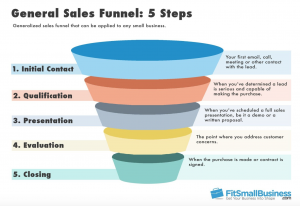So your website looks great, SEO stuff in place, products and services beautifully showcased. Excellent!
Now what? People are visiting your site and you hope they’ll buy. Do you know there are actions you can take to encourage people to buy from you – without being all “salesy?”
This is where sales funnels come in! If you’re somewhat familiar with them but never got involved because it all sounds complicated and maybe you’ll come across as being a salesperson….no worries! When done right by putting your customers’ needs first, empathizing with them and what they really need with caring and compassion, they will never feel “sold to.”
Setting up a sales funnel is as simple or involved as you want it to be. Anything is better than none at all. There are many people and programs available to learn from, but nothing beats hiring someone who knows your business and can apply funnels that are uniquely suited for your situation. And as a creative, you’re in a unique niche. It’s vastly different from selling, say, tools.
But no matter how mainstream or specialized your business is, you will follow the same basic steps.
1. Awareness
Your first interaction with someone who shows interest and learns about your business and what you offer. You might have received an email, phone call, an inquiry from your site, or had a meeting with them.
2. Interest
When you’ve determined a lead is a potential customer or client. They might subscribe to your email list or follow you on social media. You see that they would be a good fit to work with as a client, or they have a need that your business can fill.
3. Evaluation
When they’re seriously interested in working with or buying from you, you give them a detailed sales presentation, or a written proposal. They’ve given you their attention and interest, and you respond.
4. Engagement
This is when you overcome objections, negotiate terms of your working agreement/contract, discuss sales options such as packages, sizes, features. You both work out what they need vs. what they’re willing to spend.
5. Closing
When the sale is made, the contract signed – whatever is your ultimate goal.

The graphic above shows the 5-step process of a sales funnel. While some of the steps are named differently than my definitions, they’re just different names for the same process. It might seem complex at first. Don’t worry – there are programs that can automate the process for you, and you can set up a work flow that once in place, is a streamlined process.
Here’s a site with examples of 17 successful sales funnels, what their sites look like, and how they fit into the sales funnel paradigm.
Now that you’ve learned about sales funnels, try it out yourself and find out how having a pre-planned workflow is easier for you to manage, and easier for your customers to buy from you. Good for everyone!
Photo by Arthur Osipyan on Unsplash
 Copyright secured by Digiprove © 2018 Ellen Clarke
Copyright secured by Digiprove © 2018 Ellen Clarke 

Recent Comments